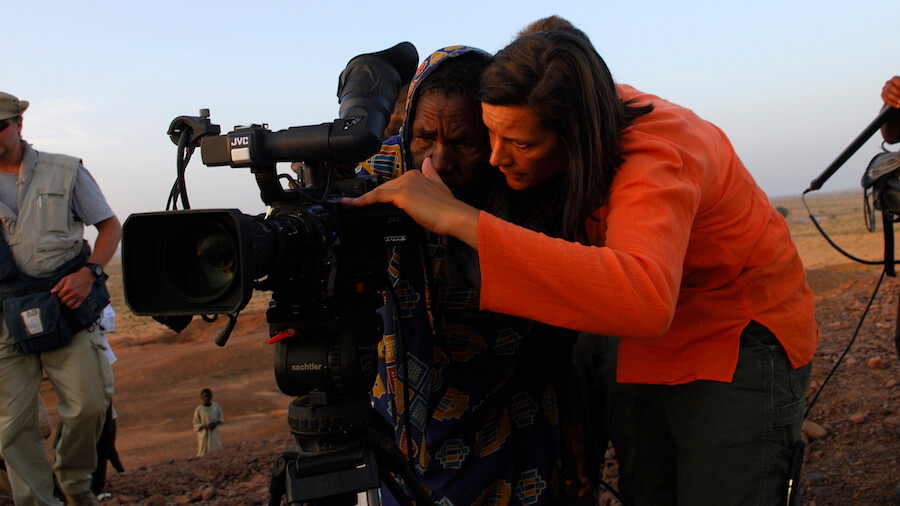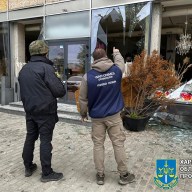The documentary “Cameraperson” was born out of the collapse of another. Kirsten Johnson — a longtime cinematographer and camera operator (she prefers the helpfully vague “cameraperson”) for documentaries like “Citizenfour,” “Fahrenheit 9/11” and “Darfur Now” — was making a film about Afghanistan. However, the footage she had gotten of one of her subjects, a young Afghan teenager, would put her in danger if her neighbors could see it, which they probably could. Johnson realized this quandary would be a subject worth exploring. And so now we have “Cameraperson,” an experimental doc that uses footage from this aborted film and outtakes and various unused footage from the docs she’s shot over 20-plus years. It’s not a didactic film; quite the opposite. It hops around various footage, various time periods and various locations, as though on shuffle. Along the way you’re quietly confronted with asking pressing questions about what we’re looking at and why, and what it means to turn the camera on a stranger, even if it’s for noble reasons. Johnson, back in her Manhattan home, spoke to us about being a cameraperson on documentaries and what the film says about our own social media habits.
One of the issues raised in the film is the nature of the relationship between the person filming and the people they’re filming. You often have footage where you’re interacting with subjects, trying to form some kind of relationship with them. RELATED: Review: “Cameraperson” is a brilliant documentary about documentaries The film is peppered with scenes of you talking from behind the camera to an Afghan boy in Kabul, where you’re comforting him, trying to get him to relax before he talks about something horrible. Is that often part of your role as a cameraperson? That’s another idea in the film: that while it’s important for people to make sure the world knows about their trauma, talking about it or only being defined by it can, in some cases, prolong and exacerbate the trauma. The speed with which social media has taken over has been so fast that I don’t think we’ve thought through all of the important ethical questions about representation. We’re quick to take and broadcast an image of something or someone without asking if it’s wrong to do so. It’s also a very personal film in another way: It shows the life of someone who goes from job to job, and all over the world. You often return to this town in Bosnia called Foca. You seem to have developed a close relationship with the denizens. It’s like the moment in the film where we show my mom’s ashes, and then she comes to life [in a video clip] again.It got me thinking that images are magic. They do bring joy and bring people back to life to some extent. It was so cool to see them see her again. I ran out and made a color Xerox of the screen grab of their mother, and framed and sent it back to Foca, because they don’t have a computer, they can’t have the movie yet, and there’s no form in which they can watch it. But now they have an image of her. That made me appreciate again the way film creates connections and generates love and helps us with the way our memory functions.
Sometimes the person with the camera is the person is the closest with the subject. We also know that cameras can be intimidating or threatening or upsetting. We’re always questioning and wondering why and how someone wants to be filmed. I see it as my job to make them feel as comfortable as possible, to be themselves in front of the camera. That can mean different things to different people. Sometimes I’m joking around and touching people and being really close to them. Other times I’m extremely respectful and silent.
It is. Part of what’s incredible is you’re sometimes faced with a situation of not being able to understand the language someone is speaking in, but you’re still trying to film them. That certainly was a moment of that. There are other times when I transgress the boundaries of what is actually my relationship. There’s that moment with the Bosnian grandmother where I ask about her fashion sense. That was me not being able to contain myself anymore, because we were pushing her to talk about the war and tried it from different angles. And she really didn’t want to.
One of the things I often struggle with is that we’re asking people to tell these emotional stories about some of the most traumatic moments in their lives. But we’re often only talking to people about their moments of victimization. I’m really interested in how we can tell more complex, complete tales of people when they’re only talking about this one terrible moment in their lives. Often I’m pushing back against only showing people as victims.
For me, images create relationships. They’re made out of relationships and they make relationships. Images can mark us indelibly, and we now have access to seeing images from around the world that we’ve never had access to before. There will be more of them coming. We’re now in a time when someone can be doing live Facetime as their partner is shot by a police officer. It’s available to all of us who have our computer screens open. We all have cameras in our phones, and we can all find ourselves in that moment when we ask, “Do I film it or not film it? What are we looking at this, and why are we looking at this?” These are vital questions in this moment in history.
What we were trying to simulate are aspects of my experiences as a cameraperson — that I go from Yemen back to Manhattan back to Missouri to Myanmar. That is my life. I’m juggling all these technical and emotional requirements as the story is unfolding in front of me. I’m making choices as I’m propelled forward. [In the scene where] the boxer is walking down the hall, it felt like I was in the zone. It felt like I was watching a movie. I went with him, not sure where he was going. I wanted to audience to understand that’s how I experienced that — to see me searching for a story I don’t understand.
I just back from Bosnia, where I showed the film at the Sarajevo Film Festival. I learned the grandmother [the one who talks about her fashion sense] died on July 6, just a month before I was there. I had been looking forward to her seeing herself on the screen. The grandson said they have no photos of her. So basically they’re seeing her onscreen 40 days after her death.
‘Cameraperson’ director Kirsten Johnson wants you to think about what you shoot

Janus Films
Follow Matt Prigge on Twitter @mattprigge


















